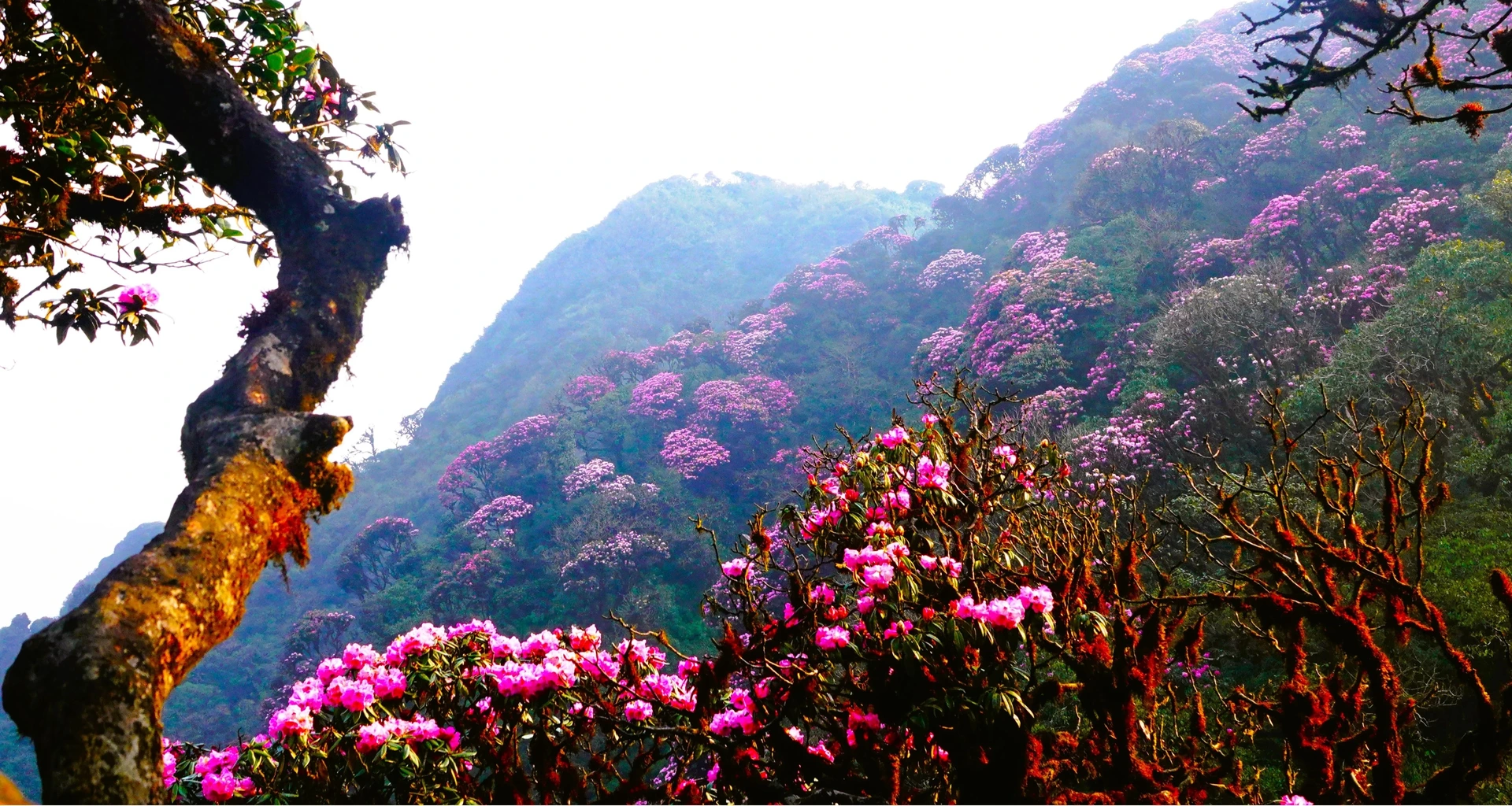Weather
Lai Chau has the characteristics of the climate and culture of the Northwest, so the right time to travel to Lai Chau is September-October when the rice fields are ripe and yellow, then spring, January-March, with all kinds of flowers such as peaches, brilliant blooms and the watering season in April-May. In summer, from June to August, when it rains a lot, it is recommended to avoid traveling to Lai Chau.
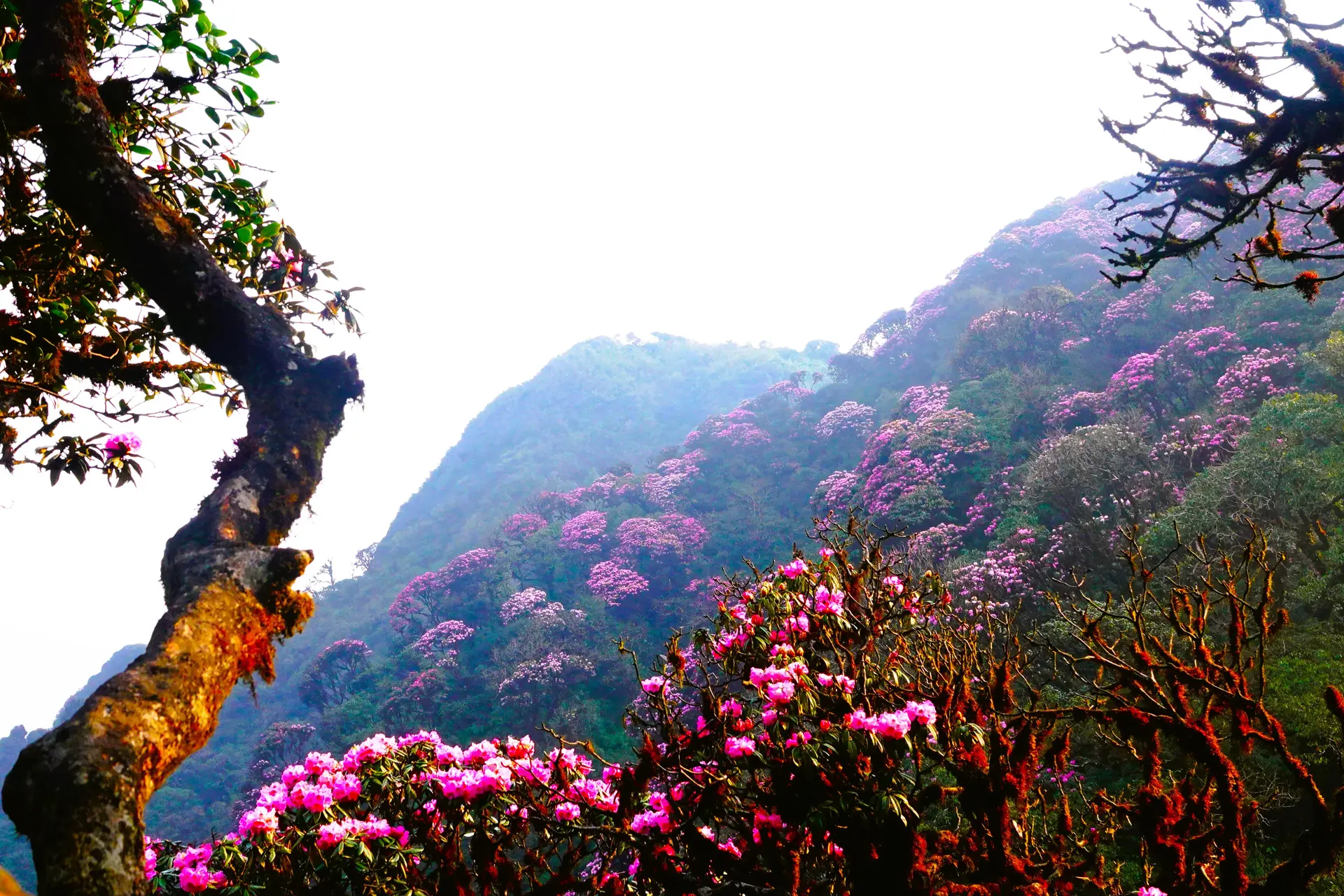
Photo: Tuong Linh
Move
From Hanoi to Lai Chau, follow the Hanoi - Lao Cai highway (CT05), then enter National Highway 4D from Lao Cai city.
Lai Chau does not have an airport. Tourists from the southern provinces to the nearest airport is Dien Bien, a distance of 190 km, then travel by road for about 4 hours.
Buses depart from Giap Bat or My Dinh bus station (Hanoi) to Lai Chau, ticket prices range from 250,000 VND to 350,000 VND, depending on the garage and type of bed or seat.
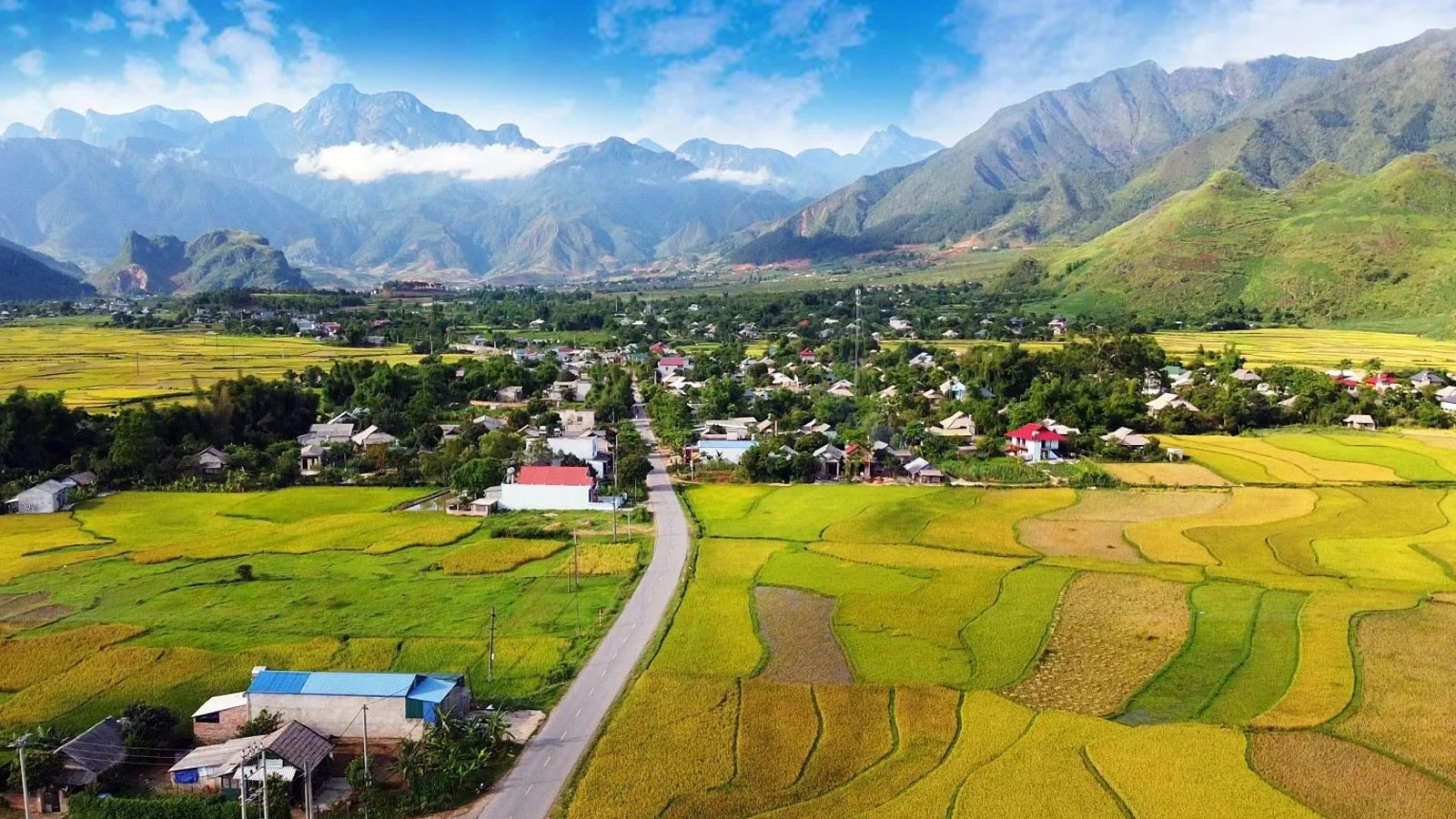
Photo: Laichau.Gov
Accommodation
Lai Chau has many hotels in the city center, including large hotels such as Hoang Nham Luxury Hotel and Muong Thanh Lai Chau Hotel, priced from 800,000 VND to 1.2 million VND; Minh Son Hotel, Putaleng Hotel, Binh Long Hotel, price from 200,000 VND to 400,000 VND.
In Sin Suoi Ho village, there are currently many clean and beautiful homestays with good service for tourists such as Sin Suoi Ho Hideaway Homestay Lai Chau, Bui Sanh homestay, Chu Vang homestay, Sung A Sung, Chinh Ly homestay. Room rates range from 300,000 VND to about 800,000 VND per night.
Sightseeing
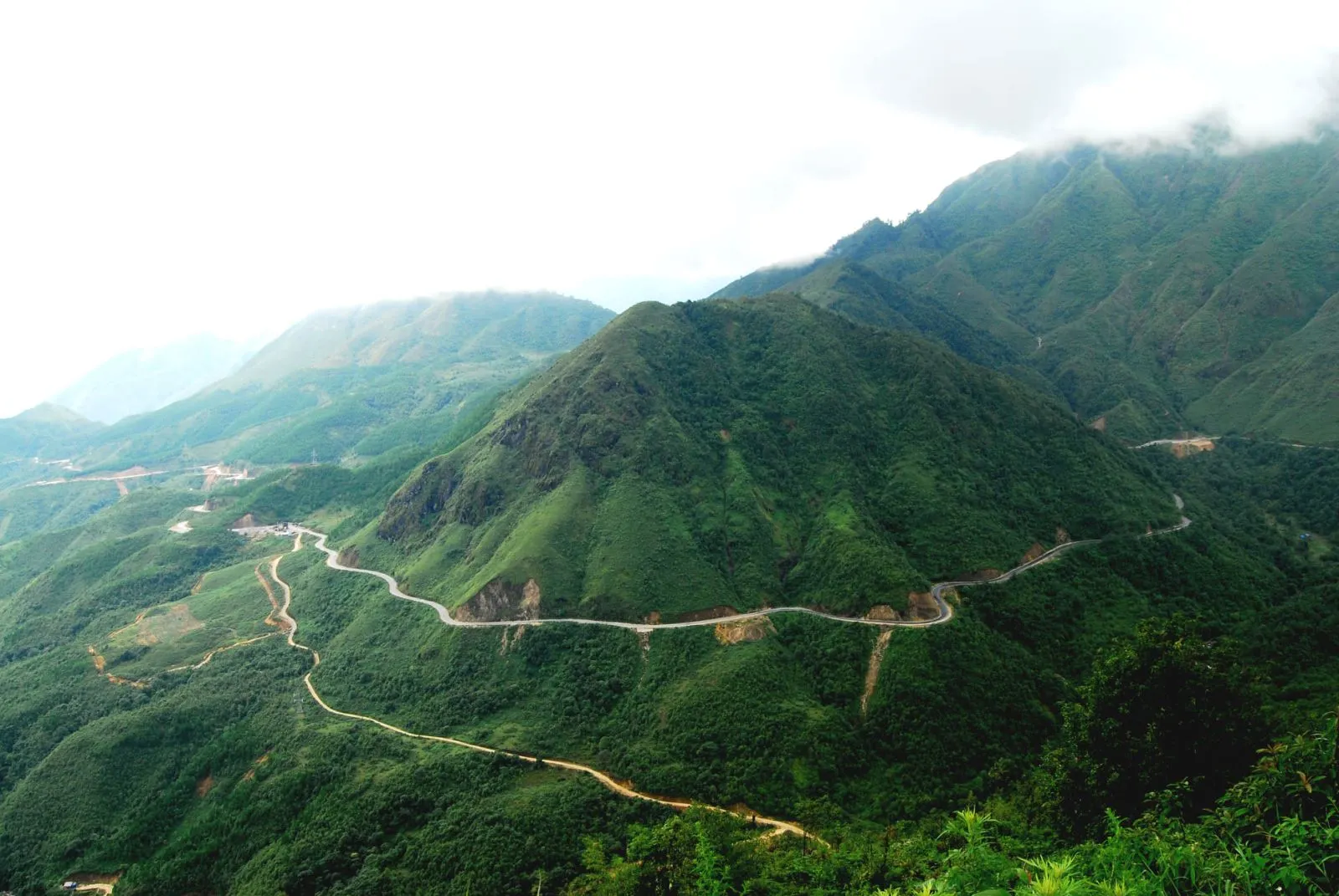
Photo: Lam Linh
O Quy Ho Pass
O Quy Ho Pass (also known as May Pass or Hoang Lien Pass) is one of the four great peaks of Vietnam's passes, 2,350 m high. O Quy Ho has a zigzag road on National Highway 4D, of which two-thirds are in Tam Duong district, Lai Chau and the other third is located in Sapa town, This is the longest pass in the Northwest mountains, nearly 50 km. In 2015, this place was recognized as a National Scenic Spot.
The altitude of the Hoang Lien Son mountain range also makes the climate of the two halves of the pass clearly delineated in the Heavenly Gate area. In winter, while the Tam Duong side is still warm, Sa Pa is cold wind, and the whole day is covered with fog. In summer, if the side of Sapa Pass is cool, Tam Duong is hot and dry.
Sin Suoi Ho Tourism Village

Image: Lekima Hung
Sin Suoi Ho village is in Phong Tho district, about 30 km from Lai Chau city. The village is located at an altitude of nearly 1,500 m above sea level, at the foot of Son Bac May mountain. In 2015, Sin Suoi Ho was recognized as a community tourism village, attracting visitors thanks to its airy, clean space and new ways of doing tourism. In the village, there are many signboards and garbage collection points, helping the space to always be clean and tidy. The village is mainly Hmong, the people here do not drink, smoke or gamble. Enough homestays and services to serve tourists.
The road to the village is now more convenient than 2-3 years ago. Tourists from Hanoi move in the direction of Noi Bai - Lao Cai highway, to Sa Pa, through O Quy Ho pass to Lai Chau city.
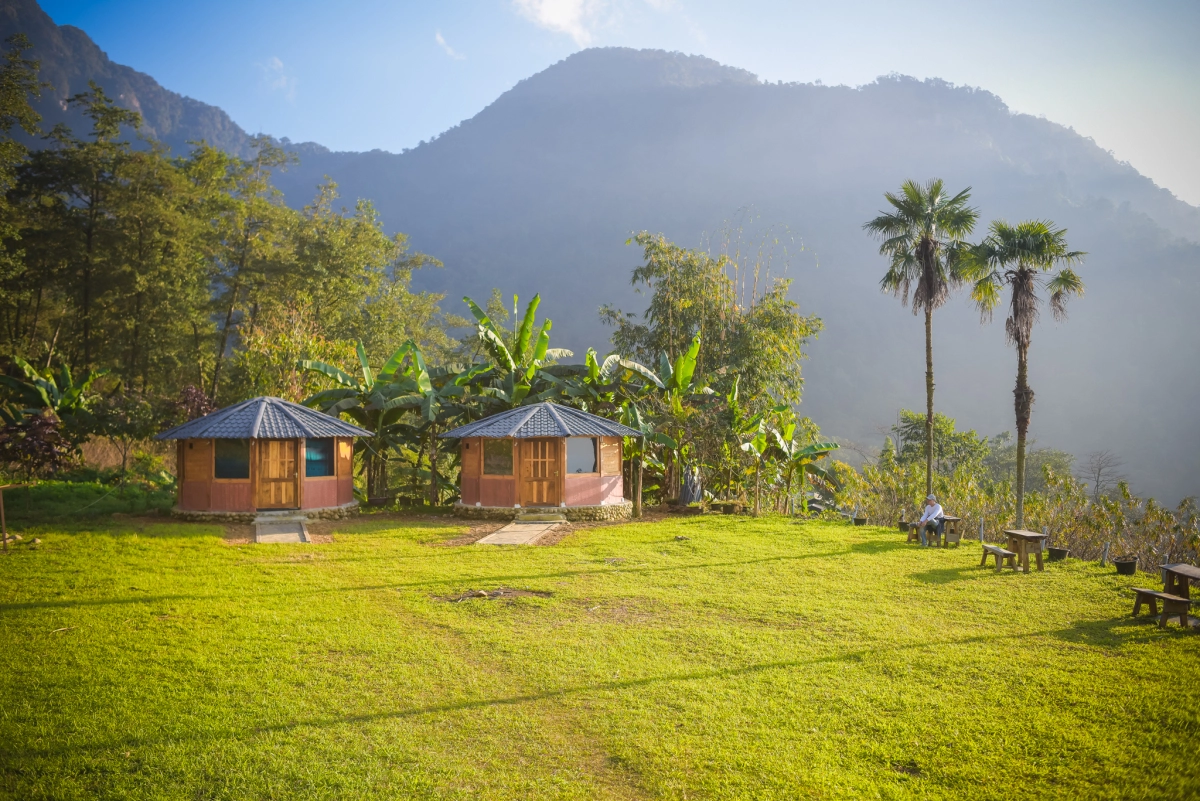
Photo: Lekima Hung
Mountain peaks
The terrain is created by mountain ranges running in the northwest - southeast direction, so Lai Chau has many peaks, attracting tourists who love trekking. It can be mentioned that Pusilung peak is 3,083 m (the second highest in Vietnam after Fansipan), Pu Ta Leng is 3,049 m high, Bach Moc Luong Tu (3,046 m), Ta Lien Son (2,996 m), Phan Lien San (3,012 m), Po Ma Lung (2,967 m). The usual climbing season is from about October to April after the weather is dry, you can hunt clouds and admire many blooming flowers such as rhododendrons, chipao, and forest peaches. Tourists when going hiking should buy a package tour or hire a local private porter to avoid getting lost.

Photo: Labor
Sin Ho Plateau
About 60 km from the center of Lai Chau city, Sin Ho Plateau is located at an altitude of more than 1,500 m. Sin Ho is located in the middle of rocky mountains, primeval forests, sea of clouds, rice terraces and villages on the mountainside. Considered as the second Sapa of the Northwest region, the weather of the day here is like 4 seasons of the year. Sin Ho is suitable for growing medicinal plants such as triventricles, cat apples, astiso, medicinal leaf bathing plants, and many varieties of temperate vegetables and fruits such as plums, peaches, pears and developed resort tourism.
Tan Uyen Tea Hill
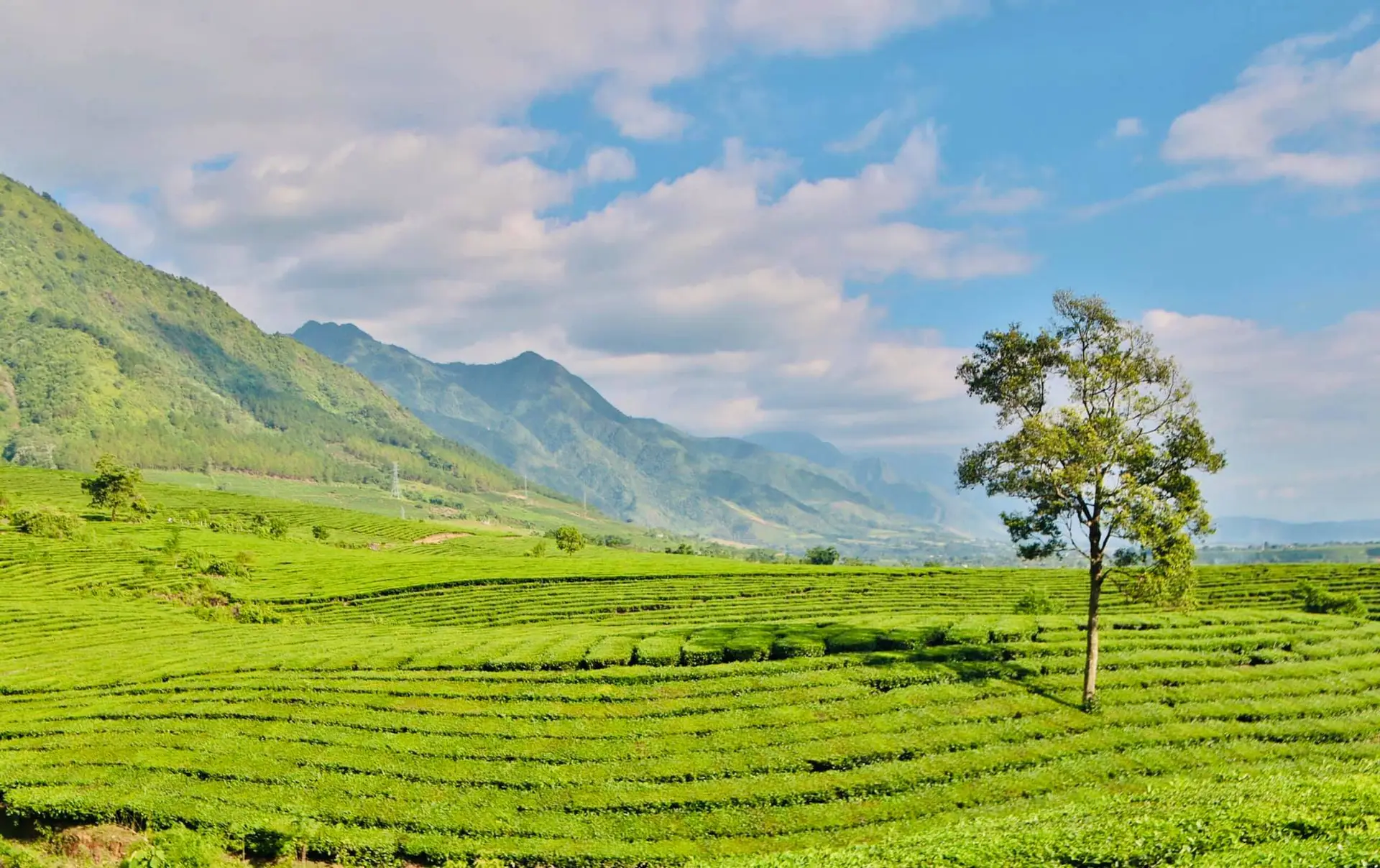
Photo: DL Lai Chau
Tan Uyen tea hill is located along National Highway 32, near the center of Tan Uyen town, is more than 40 years old, with a scale of nearly 2,000 hectares. Coming here, visitors will enjoy the scenery and fresh nature. This is also the place where many people choose to take wedding photos, or souvenir photos in a green space in the middle of dawn or sunset. Tea is also one of the main economic trees of the town with tea products famous throughout the country such as shan tuyet or oolong.
Muong Te Nature Reserve
Muong Te Nature Reserve is located in Muong Te district, is a mountainous area from 1,000 to 2,820 meters above sea level. The area has a diverse terrain with mountain ranges, valleys, rivers, streams, and waterfalls. This place is home to many ethnic minority communities but also home to many rare species of animals and plants, especially forest ecosystems. There are 57 species of rare plants that have been recorded in the Red Book of Vietnam and 7 species in the World Red Book, most of which are rare medicinal species, 22 species are narrowly endemic to the Northwest region.
Muong Than Field
Muong Than is one of the four largest fields in the Northwest region (Muong Thanh - Muong Lo - Muong Toc) in Muong Than commune, Than Uyen district. The field not only creates poetic beauty in the midst of majestic mountains and forests, but also is the place to produce many famous local products such as stomach corn, Hoang Long sweet potato, cen cu rice, and eight rice.

Photo: Laichau.Gov
Pu Sam Cap cave complex
About 6 km from Lai Chau city, on TL129 connecting Lai Chau city with Sin Ho district, the Pu Sam Cap cave complex is likened to the "Northwest of the first cave". This complex belongs to the Pu Sam Cable range system with an altitude of about 1,300 m to 1,700 m above sea level. This is a limestone mountain range formed from the tectonic era, with a comfortable slope to the south and a steep slope, dividing to the north. With more than 10 large and small caves, including two large caves, are also two places that are welcoming tourists (Thien Men cave and Thien Duong).
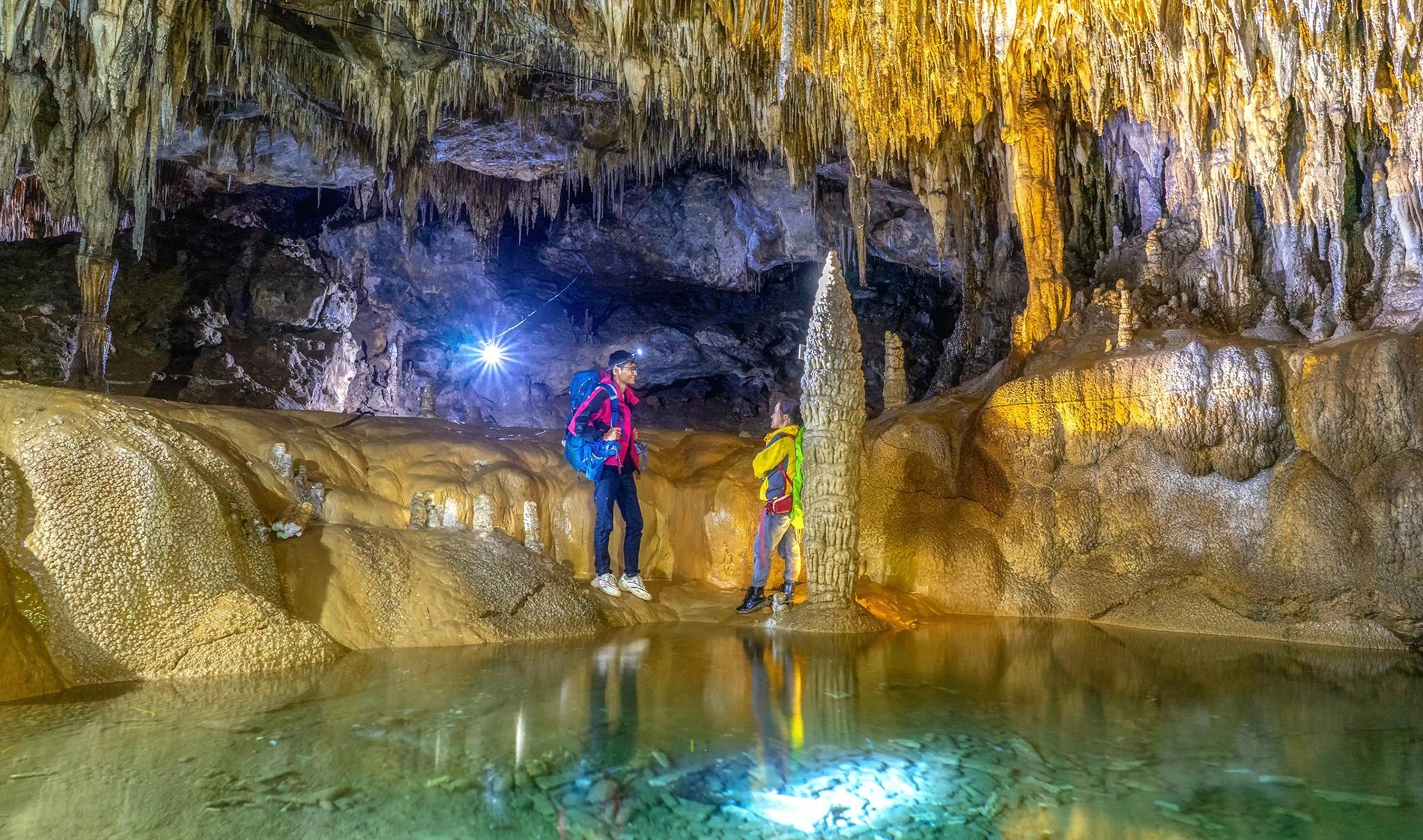
Image: Nguyen Xuan Loc
The road to Pu Sam Cap is crooked and difficult to walk, visitors should choose vehicles that can go on the road and prepare appropriate clothing.
Vang Po Hot Spring
Vang Po hot spring is located in Vang Bo village, Phong Tho town, next to National Highway 4D. Vang Pó hot spring is associated with Muong So tourist attraction and Ma Lu Hang border-gate economic zone. This place opened in 2018, covers an area of nearly 50,000 m2, has a system of bungalows and level 4 houses, physiotherapy, indoor and outdoor hot mineral swimming pools, and a large parking lot. The entrance ticket price is 30,000 VND.
In addition to Vang Po, in Lai Chau province, there are also Nam Ún and Phiêng Phat hot springs (Tan Uyen district).
Gastronomy
In addition to many typical dishes of the Northern mountainous region such as kitchen guard meat, sturgeon, pa pinh top, thang co, Lai Chau also has many typical delicious dishes.
Lai Chau purple sticky rice
Purple sticky rice is one of the specialties of Lai Chau that tourists should enjoy. Sticky rice is made from large-grained, purple sticky rice dyed from the plug plant. The plug breaks the branches and leaves, washes them, then boils them and then soaks them with rice. Sticky rice when ripe, fragrant, bright purple, soft and flexible seeds.
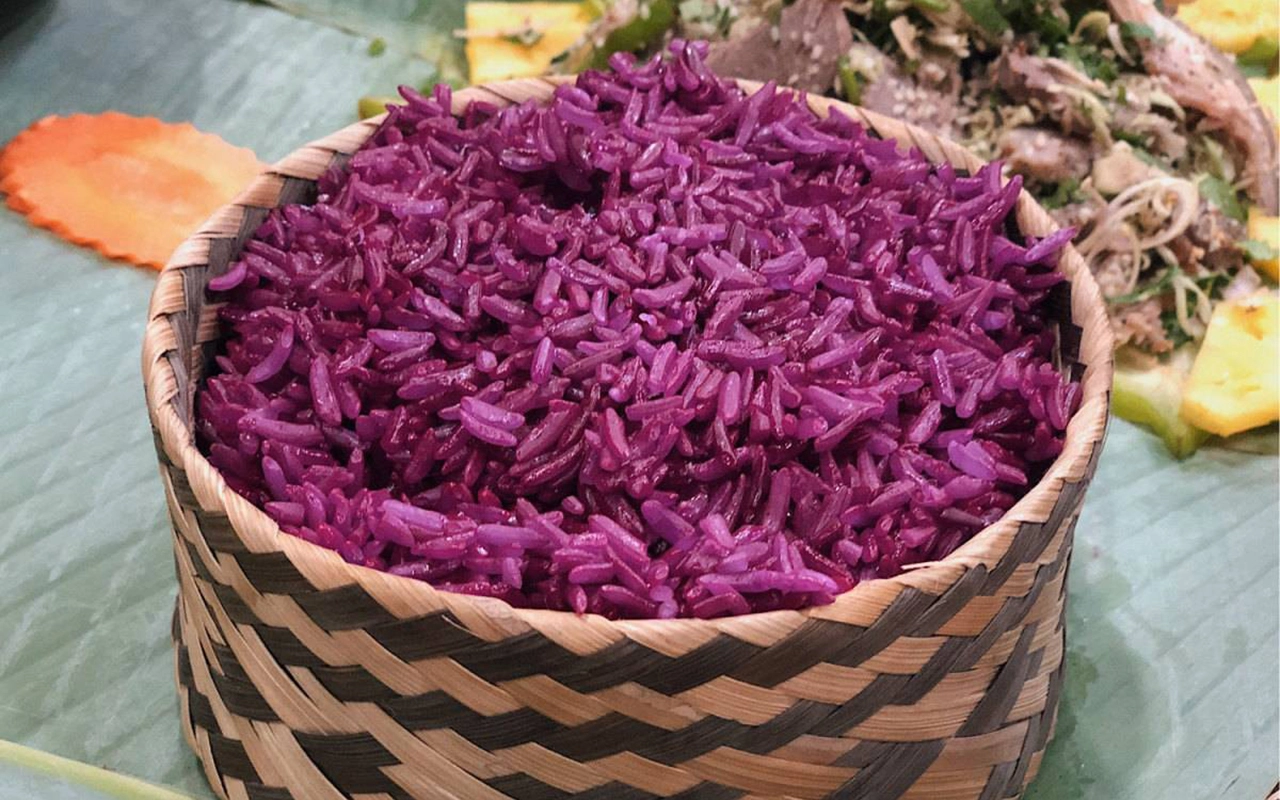
Image: PNVN
Gobies buried in ashes
Goby is caught from a stream, which is a fish with meat that is both delicious and chewy, then processed cleanly and then marinated with spices such as chili, pepper, ginger, macadamia, basil leaves, lemongrass for about 15-20 minutes and then wrapped in dong leaves, then buried in hot ashes for about 30 minutes, turned over and over 5-6 times to cook. When cooked, the fish has a slight aroma and a greasy taste.
Bitter leaf soup
The dish is prepared from pork secretions and lungs, cooked with marinated spices, combined with herbs and bitter leaves boiled before being thoroughly cooked. This dish will be a little difficult to eat for those who have never tried it because of the bitter and slightly astringent taste, but when you get used to it, you will feel the sweet, greasy taste. Bitter leaf broth is good for health, has the effect of detoxifying alcohol, curing digestive diseases.
Lam Nho
Lam nhoi (Lam is grilled, lam is nhu), is the name of a dish made from buffalo or beef cut into thin grains mixed with macadamia, chili, garlic, ginger, wild tomatoes, squash vegetables, and young squash. After the meat, spices and vegetables are mixed and absorbed, put into bamboo tubes to roast. Next, remove the meat, finely chop it and grill it for the last time. When enjoyed, the blue bean has a strong sweet, soft taste, sticking together and can be rolled into pieces.
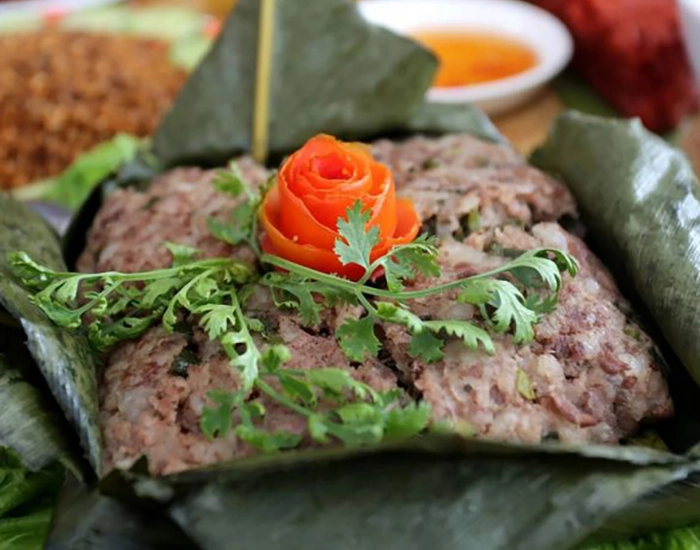
Salad with vegetables
Salad dressing is a fairly popular dish of Thai people in Lai Chau. Thai people also call the vegetable "quail", a fern-like plant with a large stem, wide foliage, and smooth green leaves. This plant grows only on the banks of streams, ravines, where there is high humidity. The soft, crispy sweetness, mixed with sour taste is the typical flavor of the salad dressing.
Note
Rhododendrons on the top of Pu Ta Leng bloom a lot and are beautiful in spring, but the short time is only 2-3 weeks.
Lai Chau and some surrounding areas may experience landslides, flood waters on rivers and streams rise, causing danger in the rainy season.
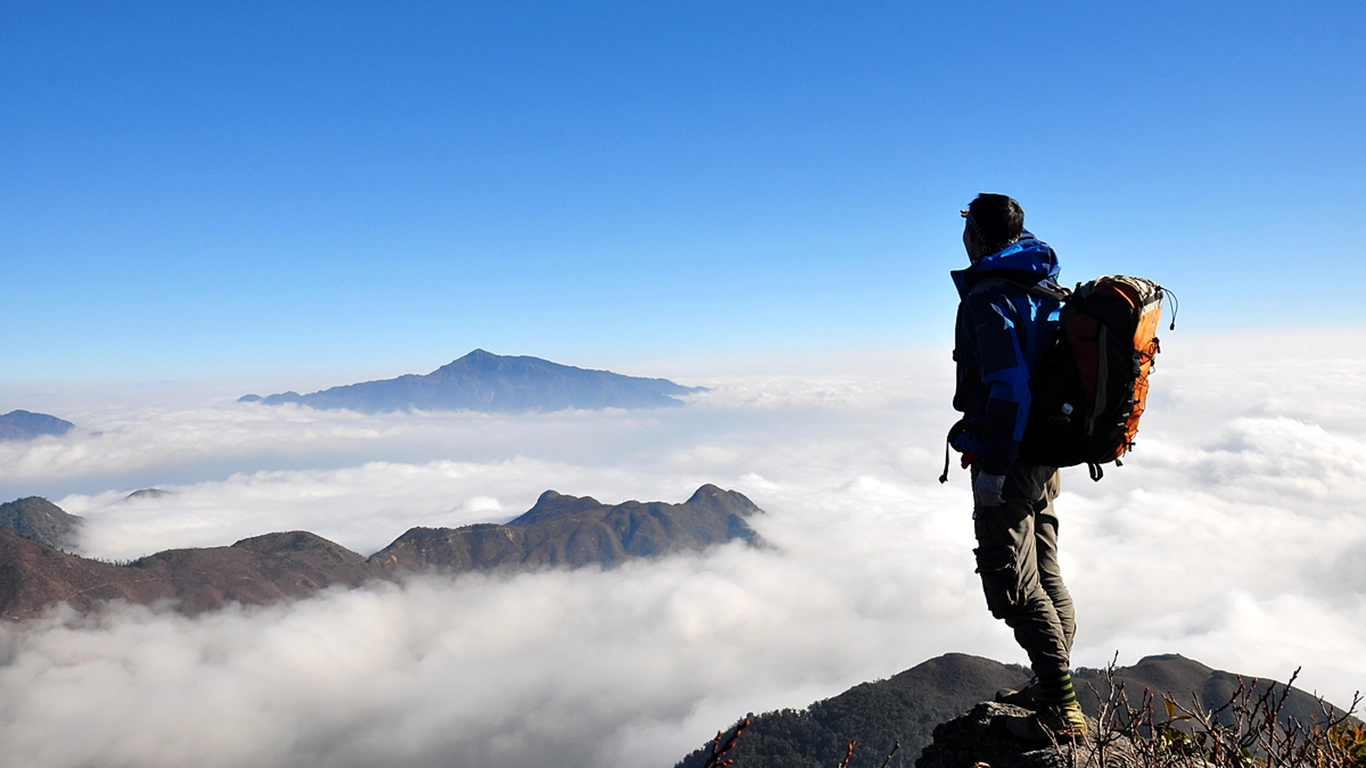
Photo: Vietravel
According to VnE
